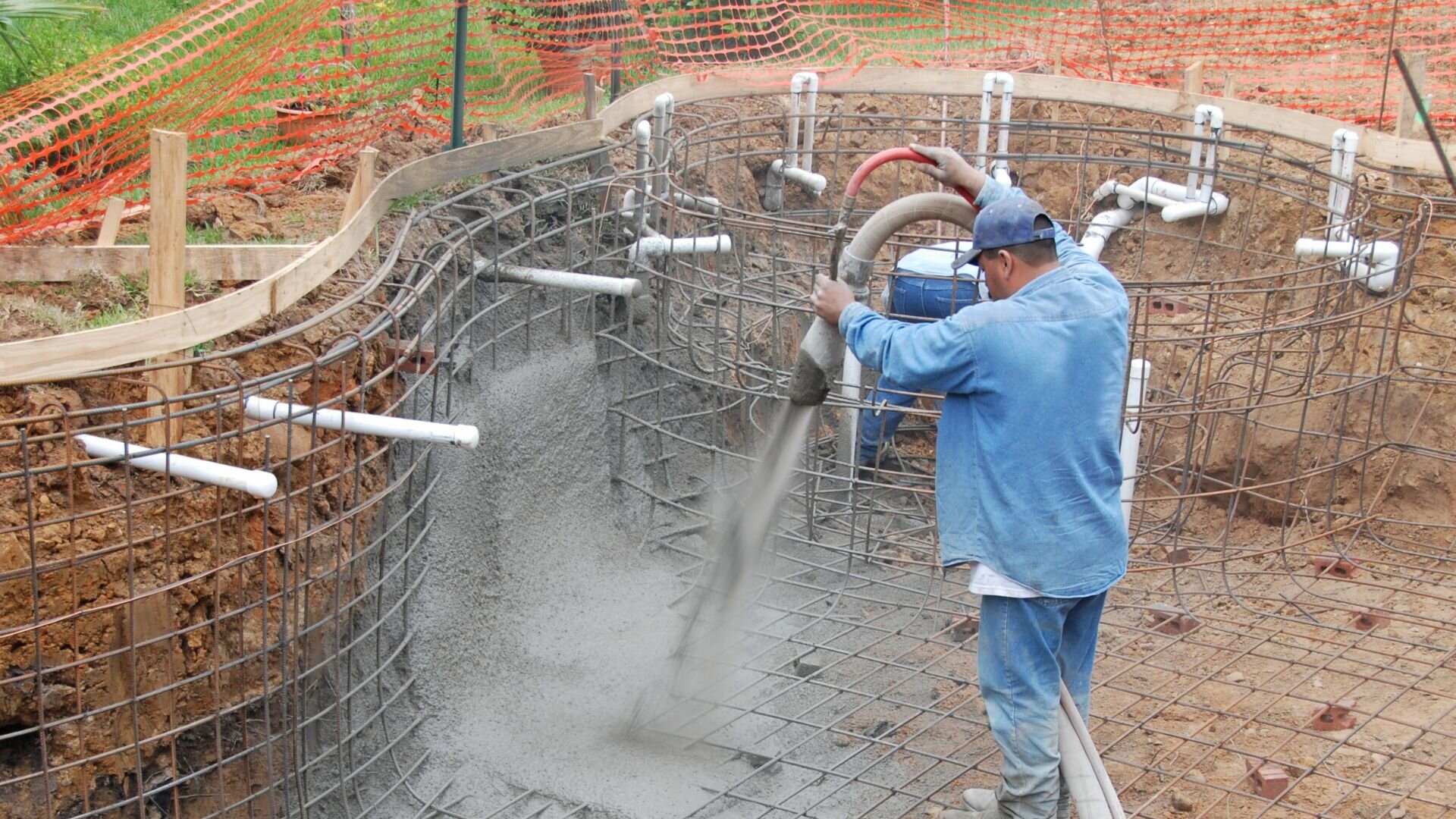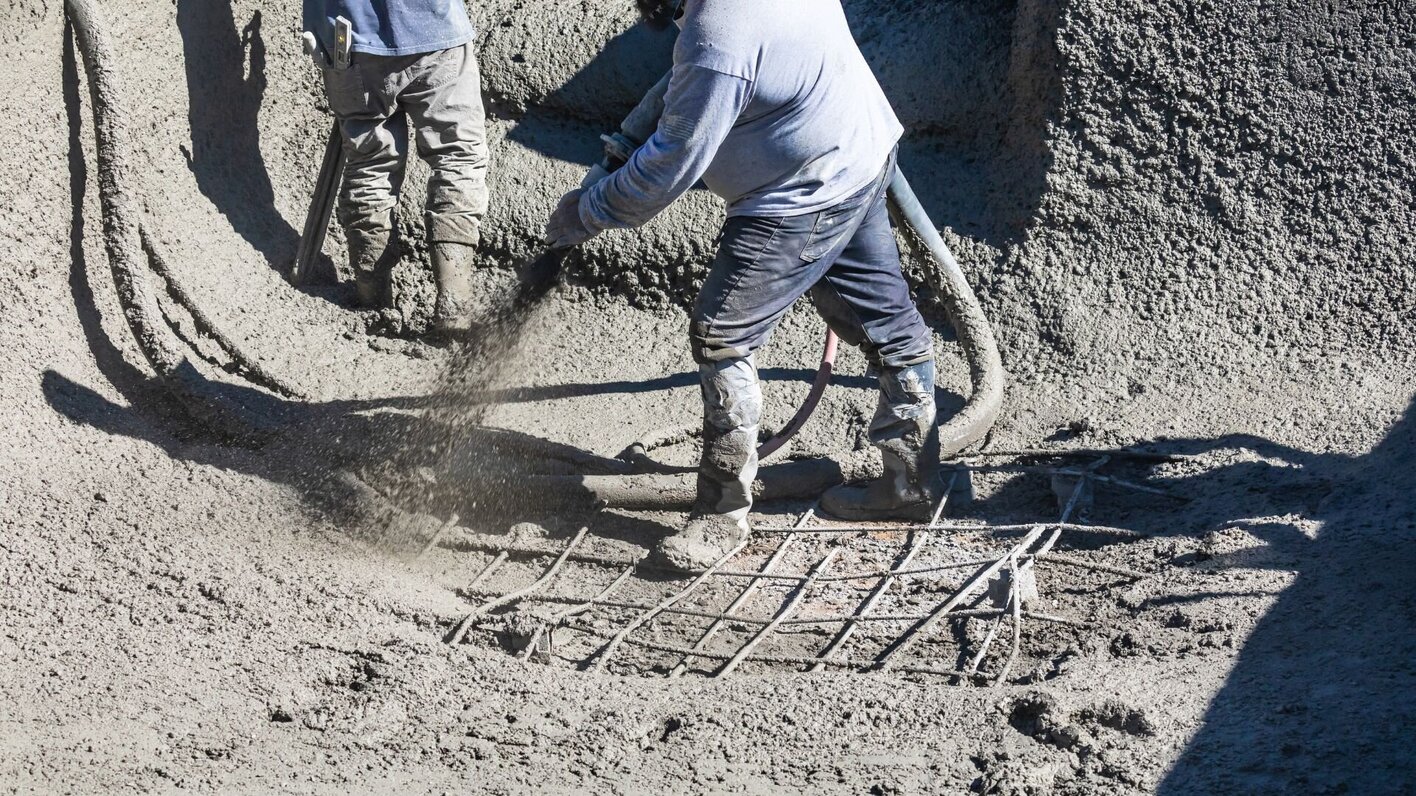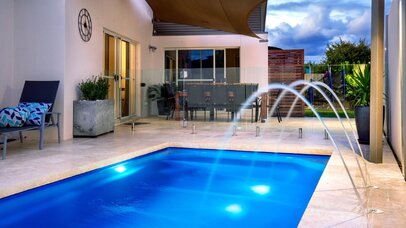Before the first concrete is poured or tile is laid, the real work of pool construction begins underground. More than just digging a deep hole, preparing the building site is one of the most important—and often overlooked— steps in the construction process.
A pool is a major financial investment homeowners expect to enjoy for decades. But without properly preparing the foundation first, all that time and money is at risk. Overly wet soil, uneven terrain, or remnants of old tree roots left in place can cause problems like cracking walls, sloping floors, or structural failures down the line.
In this article, we’ll take you behind the scenes of pool site preparation. You’ll discover why getting this phase right from the start is critical. We’ll look at the site evaluation and soil testing professionals perform to identify any red flags.
You’ll also learn about grading, drainage installation, and compaction that establish a durable base to support the pool for a lifetime of use. By understanding the complexity of preparing a solid foundation, you’ll gain new insight into ensuring your pool stands the test of time.
Introduction to Pool Site Preparation
When done correctly, pool site preparation lays the groundwork for a structure that will stand tall for generations. Contractors spend weeks carefully examining, improving, and readying the soil before excavation begins.
Why does this early stage matter so much? Because it determines just how stable and secure the entire pool will be over its lifetime. Without adequate preparation, weaknesses lurking below the surface, like unsuitable soil composition or uneven terrain, can emerge over time as problems. Homeowners may be dealing with cracked plaster, sloping floors, or worse.

However, by properly establishing a sturdy “footing” by analysing soil reports, grading the land, and compacting dirt, pool builders create a strong foundation for the pool to withstand decades of recreational use, weather fluctuations, and normal wear and tear. It allows the investment to stand proudly for years of family fun and enjoyment.
Surveying and Analysis
Before anything else, an accurate site survey lays the groundwork for finding the ideal pool location. Experienced pool builders thoroughly examine each property, considering important factors like drainage, soil composition, and surrounding terrain.
Through on-site analysis, contractors identify any potential red flags that could interfere, such as poor drainage, uneven land, or underground utilities. Soil testing involves sampling to evaluate a site’s ability to withstand pressure.
Contractors also locate the perfect spot to situate the pool where it can be safely used, easily accessed, and maintained. They analyse proximity to homes and desired views while avoiding problem areas. This upfront inspection helps determine how to tackle issues proactively through preparation strategies.
With a comprehensive site survey, builders gain key insights for developing a complete plan to optimise the layout and structural integrity of the future pool surroundings. Homeowners can feel confident that any construction challenges have been uncovered and addressed.
Grading and Leveling
After surveying identifies the best location, careful grading and levelling transform the landscape. Heavy machinery contours the earth, guided precisely by lasers or transits.
For inground pools especially, a completely flat and even surface is imperative. The excavation area is graded to form a true horizontal plane. This level base allows the pool basin and plumbing to be installed perfectly square for balanced water flow.
Contractors also slope the terrain away from the planned pool area. Redirecting any surface runoff helps prevent water from pooling near the foundation. It promotes proper drainage to protect the area from flooding or erosion that could undermine stability.
This phase sculpts the land properly to receive the pool installation. Afterwards, the engineered terrain is ready for digging based on the pre-determined design specifications. Its flat, true profile sets the stage for a pool structure that is uniformly supported.
Clearing the Site

Removing Underground Hindrances
Before excavation begins, all subsurface obstacles are carefully extracted. This includes large roots, rocks or any buried waste that could potentially interfere with the foundation later on. Near-surface stumps are ground down, leaving just clean soil.
Assessing Overhead Threats
Surrounding trees are also evaluated for risk. Contractors may prune branches to prevent debris from falling into the pool area. Canopy trimming ensures trees won’t overshadow the space or damage the structure.
Preparing for Excavation
With the area cleared, excavation equipment moves in. Machinery digs precisely to the intended depth plans. All removed soil and debris is systematically carted away, avoiding leftover materials that could reintroduce issues. This leaves an open, obstacle-free area ready to receive the engineered base later.
Soil Compaction and Stability
This critical phase creates a robust subsurface that can reliably support your pool for decades in Australian conditions. Compaction equipment commonly used includes vibrating plates and rollers.
Machines deliver controlled compaction energy through vibration and weight to physically densify disturbed soils. This forces soil particles tighter together, squeezing out any air voids.
Australian pool builders may compact soils in thin ‘lifts’ of 150-200mm, testing density between each new layer. They aim to meet the Australian Standard AS3798 of at least 90% modified maximum dry density.
A densely packed soil base better resists settlement caused by heavy summer downpours or heat expansion, which is common in Australian seasons—over time, settling risks of cracking or structural issues.
Proper compaction also increases stability, protecting against potential problems like unintended shifting in variable climates. It safeguards expensive pool equipment from stress cracks or leaks due to soil movement. As a homeowner, you can feel secure knowing their heavy pool installation rests firmly on an engineered subsurface base built to withstand Australia’s weather extremes for many years of family fun.
Safety Measures and Regulations
Construction projects require approvals from local councils according to Australian standards and state-based swimming pool acts. Permits address important life safety considerations.
You must understand their obligations, such as forming a self-closing/self-latching child-resistant barrier around the pool area as required by Aus standard AS1926.1.
Setbacks from buildings, boundaries and overhead wires are specified to prevent access issues or electrocution risks. Drainage and backwash disposal must also comply to avoid environmental hazards.
Pool basin stability in Australia is governed by AS1926.3, which requires at least 90% modified compaction to support heavy pools and decking loads safely. Certified professionals ensure compliance through compaction testing.
Strict national compliance protects investments and deters non-compliant do-it-yourself installations from resulting in safety incidents or injuries down the track. Local councils may fine for non-compliance.
Long-Term Benefits
When pool site work is completed to code standards from the outset, homeowners can look forward to:
- A pool foundation that stands the test of time - A stable subsurface protects the pool structure from settling or uneven impact stresses over decades of use.
- Minimal long-term maintenance costs - Correct preparation reduces the likelihood of costly repairs from issues like cracking or structural bending.
- Durability through extreme Australian seasons - Dense, well-drained soils secure the pool against movement caused by flooding rains or dry heat cycles.
- Peace of mind - Sinks, shifting, or premature wear are less likely when pools rest on engineering-approved compacted beds prepared by qualified builders.
- Longevity to pass on to future owners - With a sturdy base, pools can remain structurally sound right through ownership transfers, providing generations of family enjoyment.
With site preparation establishing such a firm footing, pool investments deliver fantastic long-lasting value through reliability, energy efficiency and low-maintenance operation for decades.
Preparing the Pool Site: A Checklist

1. Comprehensive Site Survey
Evaluate location suitability, soil composition, drainage and potential challenges.
2. Design Development
Create a scaled plan detailing dimensions, equipment placement and landscaping.
3. Land Transformation
Grade and contour the site for proper pitch and a level excavation plane.
4. Obstacle Removal
Clear away roots, rocks and debris from the planned pool footprint.
5. Excavation
Dig to the designated depth, systematically removing excess material.
6. Soil Assessment
Identify composition and make amendments like adding drainage rock if needed.
7. Thorough Compaction
Consolidate disturbed soils in thin lifts, testing density between layers.
8. Subsurface Works
Install subsurface drains to prevent water from accumulating under the pool.
9. Formwork Assembly
Construct reinforced timber or steel wall panels for the concrete basin.
10. Pool Shell Construction
Pour the concrete and final precise levelling to complete the rigid pool base.
Ensuring a Solid Foundation for Years of Enjoyment
Through meticulous planning and construction site preparation, pool builders lay the essential groundwork for a structure that stands the test of time. Homeowners can look forward to decades of worry-free use and leisure when their project commences on such a sturdy foundation.
By understanding the intricacies of site evaluation, obstacle removal, compaction and more, you can feel confident in a pool that delivers endless summers of relaxation. So pay attention to this vital first step - proper preparation makes all the difference.
For expert guidance every step of the way, speak to the team at The Pool Co. As Sydney’s trusted pool installation specialists, they have the experience to navigate even the most complex sites.
The Pool Co will survey your property, develop construction plans, and expertly manage all site preparation tasks. Homeowners enjoy peace of mind knowing their heavy concrete structure rests on a bedrock-solid base. So, if you’re ready to start building, call us today!



